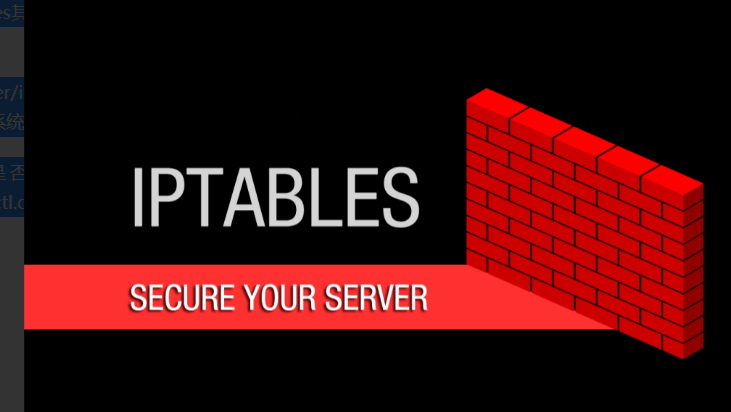firewall-cmd 命令配置
名词解释
在具体介绍 zone 之前,先给大家介绍几个相关的名词,因为如果不理解这几个名词 zone 就无从入手。
- target:目标,可以理解为默认行为,有四个可选值:default、ACCEPT、REJECT、DROP,如果不设置默认为default
- service:表示一个服务
- port:端口,使用 port 可以不通过 service 而直接对端口进行设置
- interface:接口,可以理解为网卡
- source:源地址,可以是 ip 地址也可以是 ip 地址段
- icmp-block:icmp 报文阻塞,可以按照 icmp 类型进行设置
- masquerade:ip 地址伪装,也就是按照源网卡地址进行 NAT 转发
- forward-port:端口转发
- rule:自定义规则
哪个zone在起作用
我们知道每个 zone 就是一套规则集,但是有那么多 zone,对于一个具体的请求来说应该使用哪个zone(哪套规则)来处理呢?这个问题至关重要,如果这点不弄明白其他的都是空中楼阁,即使规则设置的再好,不知道怎样用、在哪里用也不行。
对于一个接受到的请求具体使用哪个 zone,firewalld 是通过三种方法来判断的:
1、source,也就是源地址
2、interface,接收请求的网卡
3、firewalld.conf 中配置的默认 zone
这三个的优先级按顺序依次降低,也就是说如果按照 source 可以找到就不会再按 interface去查找,如果前两个都找不到才会使用第三个,也就是讲过的在f irewalld.conf 中配置的默认 zone。
配置source
source 是在 zone 的 xml 文件中配置的,其格式为
<zone>
<source address="address[/mask]"/>
</zone>
只要我们将 source 节点放入相应的 zone 配置文件中就可以了,节点的 address 属性就是源地址,不过我们要注意相同的 source 节点只可以在一个 zone 中进行配置,也就是说同一个源地址只能对于一个 zone,另外,直接编辑xml文件之后还需要reload才可以起作用。
另外,我们当然也可以使用 firewall-cmd 命令进行配置,这里主要有五个相关命令(参数)
firewall-cmd [--permanent] [--zone=zone] --list-sources
firewall-cmd [--permanent] [--zone=zone] --query-source=source[/mask]
firewall-cmd [--permanent] [--zone=zone] --add-source=source[/mask]
firewall-cmd [--zone=zone] --change-source=source[/mask]
firewall-cmd [--permanent] [--zone=zone] --remove-source=source[/mask]
分别来介绍一下
- --list-sources:用于列出指定 zone 的所有绑定的 source 地址
- --query-source:用于查询指定 zone 是否跟指定 source 地址进行了绑定
- --add-source:用于将一个 source 地址绑定到指定的 zone
- --change-source:用于改变 source 地址所绑定的 zone,如果原来没有绑定则进行绑定,这样就跟 --add-source 的作用一样了
- --remove-source:用于删除 source 地址跟 zone 的绑定
可以看到上面的命令中有两个可选参数:--permanent 和 --zone,--permanent 表示是否存储到配置文件中(如果存储到配置文件中这不会立即生效),--zone 用于指定所要设置的zone,如果不指定则使用默认 zone。
[root@OpsNote ~]# firewall-cmd --zone=drop --list-all
drop
interfaces:
sources:
services:
ports:
masquerade: no
forward-ports:
icmp-blocks:
rich rules:
[root@OpsNote ~]# firewall-cmd --zone=drop --add-source=1.2.3.5
success
[root@OpsNote ~]# firewall-cmd --zone=drop --list-all
drop
interfaces:
sources: 1.2.3.5
services:
ports:
masquerade: no
forward-ports:
icmp-blocks:
rich rules:
[root@OpsNote ~]#
将 1.2.3.5 绑定到 drop 这个 zone 中,所有来自 1.2.3.5 这个 ip 的连接将会被 drop 。
配置interface
相关的 firewall-cmd 命令为
firewall-cmd [--permanent] [--zone=zone] --list-interfaces
firewall-cmd [--permanent] [--zone=zone] --add-interface=interface
firewall-cmd [--zone=zone] --change-interface=interface
firewall-cmd [--permanent] [--zone=zone] --query-interface=interface
firewall-cmd [--permanent] [--zone=zone] --remove-interface=interface
可以在网卡配置文件中进行配置,比如可以在
/etc/sysconfig.NETwork-scripts/ifcfg-eno16777728 文件中添加下面的配置
ZONE=public
这行配置就相当于下面的命令
[root@OpsNote ~]# firewall-cmd --zone=public --change-interface=eno16777728
这样配置之后来自 eno16777728 的连接就会使用 public 这个 zone 进行管理(如果source匹配了其他的 zone 除外)。
配置默认zone
默认 zon e的配置是通过 firewalld.conf 配置文件的 DefaultZone 配置项来配置的,当然也可以使用firewall-cmd命令来配置,通过 --get-default-zone 来获取默认zone的值
[root@OpsNote ~]# firewall-cmd --get-default-zone
public
[root@OpsNote ~]# firewall-cmd --set-default-zone=internal
success
[root@OpsNote ~]# firewall-cmd --get-default-zone
internal
[root@OpsNote ~]#
使用下面的命令来查看当前所有起作用的zone
[root@OpsNote ~]# firewall-cmd --get-active-zones
drop
sources: 1.2.3.5
internal
interfaces: eno16777728
[root@OpsNote ~]# firewall-cmd --zone=drop --remove-source=1.2.3.5
success
[root@OpsNote ~]# firewall-cmd --get-active-zones
internal
interfaces: eno16777728
[root@OpsNote ~]#
firewalld 还给我们提供了反向查询的命令,也就是根据 source 或者 interface 查询所对应的 zone,其命令如下
firewall-cmd --get-zone-of-interface=interface
firewall-cmd --get-zone-of-source=source[/mask]
zone 规则配置
target
zone 规则中首先最重要的是 target 的设置,他默认可以取四个值:default、ACCEPT、REJECT、DROP,firewall-cmd 命令如下
firewall-cmd --permanent [--zone=zone] --get-target
firewall-cmd --permanent [--zone=zone] --set-target=target
这里的--permanent不是可选的,也就是说使用firewall-cmd命令也不可以让他直接生效,也需要reload才可以。
service
配置命令为
firewall-cmd [--permanent] [--zone=zone] --list-services
firewall-cmd [--permanent] [--zone=zone] --add-service=service [--timeout=seconds]
firewall-cmd [--permanent] [--zone=zone] --remove-service=service
firewall-cmd [--permanent] [--zone=zone] --query-service=service
具体每个命令的含义大家对照上面的 source 很容易就理解了,--add 命令中多了一个--timeout选项
--add-service中的--timeout的含义是这样的:添加一个服务,但是不是一直生效而是生效一段时间,过期之后自动删除。
这个选项非常有用,比如我们想暂时开放一个端口进行一些特殊的操作(比如远程调试),等处理完成后再关闭,不过有时候我们处理完之后就忘记关闭了,而现在的 --timeout 选项就可以帮我们很好地解决这个问题,我们在打开的时候就可以直接设置一个时间,到时间之后他自动就可以关闭了。--timeout 和 --permanent 是不可以一起使用的。
port
配置命令为
firewall-cmd [--permanent] [--zone=zone] --list-ports
firewall-cmd [--permanent] [--zone=zone] --add-port=portid[-portid]/protocol [--timeout=seconds]
firewall-cmd [--permanent] [--zone=zone] --remove-port=portid[-portid]/protocol
firewall-cmd [--permanent] [--zone=zone] --query-port=portid[-portid]/protocol
icmp-block
icmp-block 是按照 icmp 的类型进行设置阻塞,比如我们不想接受 ping 报文就可以使用下面的命令来设置
[root@OpsNote ~]# firewall-cmd --add-icmp-block=echo-request
相应操作命令
firewall-cmd [--permanent] [--zone=zone] --list-icmp-blocks
firewall-cmd [--permanent] [--zone=zone] --add-icmp-block=icmptype [--timeout=seconds]
firewall-cmd [--permanent] [--zone=zone] --remove-icmp-block=icmptype
firewall-cmd [--permanent] [--zone=zone] --query-icmp-block=icmptype
masquerade
masquerade 大家应该都比较熟悉,其作用就是ip地址伪装,也就是NAT转发中的一种,具体处理方式是将接收到的请求的源地址设置为转发请求网卡的地址,这在路由器等相关设备中非常重要,比如大家很多都使用的是路由器连接的局域网,而想上互联网就得将我们的ip地址给修改一下,要不大家都是192.168.1.XXX的内网地址,那请求怎么能正确返回呢?所以在路由器中将请求实际发送到互联网的时候就会将请求的源地址设置为路由器的外网地址,这样请求就能正确地返回给路由器了,然后路由器再根据记录返回给我们发送请求的主机了,这就是 masquerade。
操作命令为
firewall-cmd [--permanent] [--zone=zone] --add-masquerade [--timeout=seconds]
firewall-cmd [--permanent] [--zone=zone] --remove-masquerade
firewall-cmd [--permanent] [--zone=zone] --query-masquerade
forward-port
进行端口转发,比如我们要将在80端口接收到tcp请求转发到8080端口可以使用下面的命令
[root@OpsNote ~]# firewall-cmd --add-forward-port=port=80:proto=tcp:toport=8080
success
[root@OpsNote ~]#
forward-port 还支持范围转发,比如我们还可以将80到85端口的所有请求都转发到8080端口,这时只需要将上面命令中的 port 修改为80-85即可。
相关操作命令如下
firewall-cmd [--permanent] [--zone=zone] --list-forward-ports
firewall-cmd [--permanent] [--zone=zone] --add-forward-port=port=portid[-portid]:proto=protocol[:toport=portid[-portid]][:toaddr=address[/mask]][--timeout=seconds]
firewall-cmd [--permanent] [--zone=zone] --remove-forward-port=port=portid[-portid]:proto=protocol[:toport=portid[-portid]][:toaddr=address[/mask]]
firewall-cmd [--permanent] [--zone=zone] --query-forward-port=port=portid[-portid]:proto=protocol[:toport=portid[-portid]][:toaddr=address[/mask]]
rule
rule 的操作命令如下
firewall-cmd [--permanent] [--zone=zone] --list-rich-rules
firewall-cmd [--permanent] [--zone=zone] --add-rich-rule='rule' [--timeout=seconds]
firewall-cmd [--permanent] [--zone=zone] --remove-rich-rule='rule'
firewall-cmd [--permanent] [--zone=zone] --query-rich-rule='rule'
这里的参数 'rule' 代表一条规则语句,比如要设置地址为1.2.3.4的source就可以写成source address="1.2.3.4",也就是直接写标签名,然后跟着写属性就可以了,我们来看个例子
[root@OpsNote ~]# firewall-cmd --add-rich-rule='rule family="ipv4" source address="1.2.3.4" drop'
这条规则就会将1.2.3.4这个源地址的连接全部给drop掉。
使用rule结合--timeout我们可以实现一些非常好玩和有用的功能,比如我们可以写个自动化脚本,当发现有异常的连接时就可以添加一条rule将其相应的地址drop掉,而且还可以使用--timeout给设置个时间段,过了之后再自动开放!
实验

1.网站服务器环境的搭建
(1)验证firewalld在网站服务器上是否启动并且正常运行
[root@web ~]# systemctl status firewalld
(2)安装httpd和mod_ssl软件包
[root@web ~]# yum install -y httpd mod_ssl
(3)启用并启动httpd服务
[root@web ~]# systemctl start httpd
[root@web ~]# systemctl enable httpd
(4)创建网站首页测试页index.html
[root@web ~]# vi /var/www/html/index.html
test web
(5)更改ssh的监听端口,并重启服务,关闭SElinux
[root@web ~]# setenforce 0
[root@web ~]# vi /etc/ssh/sshd_config
Port 12345
[root@web ~]# systemctl restart sshd
2.在网站服务器上配置firewalld防火墙
(1)设置默认区域为dmz区域
[root@web ~]# firewall-cmd --set-default-zone=dmz
(2)为dmz区域打开https服务并添加TCP的12345端口
[root@web ~]# firewall-cmd --zone=dmz --add-service=https --permanent
[root@web ~]# firewall-cmd --zone=dmz --add-port=12345/tcp --permanent
(3)禁止ping
[root@web ~]# firewall-cmd --add-icmp-block=echo-request --zone=dmz --permanent
(4)因为预定于的ssh服务已经更改了端口,所以要将预定于ssh服务移除
[root@web ~]# firewall-cmd --zone=dmz --remove-service=ssh --permanent
(5)重新加载firewalld配置。并查看之前的配置
[root@web ~]# firewall-cmd --reload
[root@web ~]# firewall-cmd --list-all
dmz (active)
target: default
icmp-block-inversion: no
interfaces: eth0
sources:
services: https
ports: 12345/tcp
protocols:
masquerade: no
forward-ports:
sourceports:
icmp-blocks: echo-request
rich rules:
3.在网关服务器上配置firewalld防火墙
(1)验证firewalld在网关服务器上是否启动并且正在运行
[root@gateway-server ~]# systemctl status firewalld
(2)设置默认区域为external区域,并查看配置结果
[root@gateway-server ~]# firewall-cmd --set-default-zone=external
[root@gateway-server ~]# firewall-cmd --list-all
external (active)
target: default
icmp-block-inversion: no
interfaces: eth0 eth1 eth2
sources:
services: ssh
ports:
protocols:
masquerade: yes
forward-ports:
sourceports:
icmp-blocks:
rich rules:
(3)将eth1网卡配置到trusted区域,将eth2配置到dmz区域
[root@gateway-server ~]# firewall-cmd --change-interface=eth1 --zone=trusted
[root@gateway-server ~]# firewall-cmd --change-interface=eth2 --zone=dmz
(4)查看配置情况
[root@gateway-server ~]# firewall-cmd --get-active-zone
dmz
interfaces: eth2
external
interfaces: eth0
trusted
interfaces: eth1
(5)在企业内网测试计算机上访问网站服务器
https:192.168.2.10
(6)关闭SELinux,更改ssh的监听端口,并重启服务
[root@gateway-server ~]# setenforce 0
[root@gateway-server ~]# vi /etc/ssh/sshd_config
Port 12345
[root@gateway-server ~]# systemctl restart sshd
(7)配置external区域添加TCP的12345端口
[root@gateway-server ~]# firewall-cmd --zone=external --add-port=12345/tcp --permanent
(8)配置external区域移除ssh服务
[root@gateway-server ~]# firewall-cmd --zone=external --remove-service=ssh --permanent
(9)配置external区域禁止ping
[root@gateway-server ~]# firewall-cmd --zone=external --add-icmp-block=echo-request --permanent
(10)重新加载防火墙配置
[root@gateway-server ~]# firewall-cmd --reload
(11)在互联网测试机上通过ssh登录网关
[root@localhost ~]# ssh -p 12345 100.1.1.10
(12)在企业内网测试机上ssh登录web网站服务器的12345端口
[root@localhost ~]# ssh -p 12345 192.168.2.10
4.配置IP伪装与端口转发
内网用户通过网关服务器共享上网
(1)外网测试机搭建网站服务,并添加测试网页
[root@localhost ~]# hostname internet
[root@localhost ~]# bash
[root@internet ~]# yum install -y httpd
[root@internet ~]# vi /var/www/html/index.html
internet web
[root@internet ~]# systemctl enable httpd
[root@internet ~]# systemctl start httpd
(2)在企业内网测试机上访问外网网站,结果是可以访问的
http://100.1.1.20
(3)在dmz的网站服务器上测试,同样可以访问
http://100.1.1.20
(4)查看网关服务器的external区域是否开启了地址伪装
[root@internet ~]# firewall-cmd --list-all --zone=external
external
target: default
icmp-block-inversion: no
interfaces:
sources:
services: ssh
ports:
protocols:
masquerade: yes
forward-ports:
sourceports:
icmp-blocks:
rich rules:
(5)源地址192.168.1.0/24网段的地址开启IP伪装
在网关服务器上关闭external的地址伪装,添加富规则,要求external区域内源地址为192。168.1.0/24网段的地址开启地址IP伪装
[root@gateway-server ~]# firewall-cmd --remove-masquerade --zone=external
[root@gateway-server ~]# firewall-cmd --zone=external --add-rich='rule family=ipv4 source address=192.168.1.0/24 masquerade'
(6)在dmz的网站服务器上测试访问外网,应该不能访问外网
http://100.1.120
5.配置端口转发实现互联网用户访问内部web服务器
(1)在网关服务器上配置端口转发
[root@gateway-server ~]# firewall-cmd --zone=external --add-forward-port=port=443:proto=tcp:toaddr=192.168.2.10
(2)在互联网测试机上访问内部web服务器,可以访问成功
http://100.1.1.10
(3)端口转发也可以使用富规则,这样就可以更大程度的控制端口转发规则,如给内网的web服务器申请类=了一个新的公网ip地址100.1.1.15,需要将新的公网地址100.1.1.15配置在网关服务器的外网接口eth0上,作为第二个Ip地址
firewall-cmd --zone=external --add-rich-rule="rule2 family="ipv4" source address="192.168.2.0/24" masquerade"
[root@gateway-server ~]# vi /etc/sysconfig/network-scripts/ifcfg-eth0
TYPE=Ethernet
BOOTPROTO=static
NAME=eth0
DEVICE=eth0
ONBOOT=yes
IPADDR1=100.1.1.15
PREFIX1=24
IPADDR0=100.1.1.10
PREFIX=24
[root@gateway-server ~]# systemctl restart NetworkManager
[root@gateway-server ~]# ip add
1: lo: <LOOPBACK,UP,LOWER_UP> mtu 65536 qdisc noqueue state UNKNOWN qlen 1
link/loopback 00:00:00:00:00:00 brd 00:00:00:00:00:00
inet 127.0.0.1/8 scope host lo
valid_lft forever preferred_lft forever
inet6 ::1/128 scope host
valid_lft forever preferred_lft forever
2: eth0: <BROADCAST,MULTICAST,UP,LOWER_UP> mtu 1500 qdisc pfifo_fast state UP qlen 1000
link/ether 00:0c:29:ae:7f:64 brd ff:ff:ff:ff:ff:ff
inet 100.1.1.10/8 brd 100.255.255.255 scope global eth0
valid_lft forever preferred_lft forever
inet 100.1.1.15/24 brd 100.1.1.255 scope global eth0
valid_lft forever preferred_lft forever
使用富规则配置端口转发
[root@gateway-server ~]# firewall-cmd --zone=external --add-rich-rule='rule family=ipv4 destination address=100.1.1.15/32 forward-port port=443 protocol=tcp to-addr=192.168.2.10'
在互联网测试机上访问,可以访问成功
http://10.1.1.15
本文转自:https://www.cnblogs.com/-xuan/p/10640241.html



















